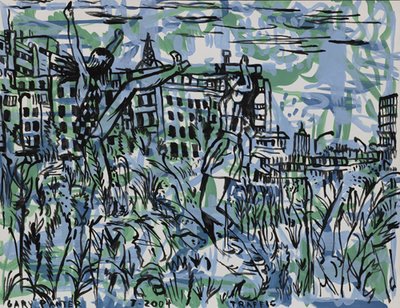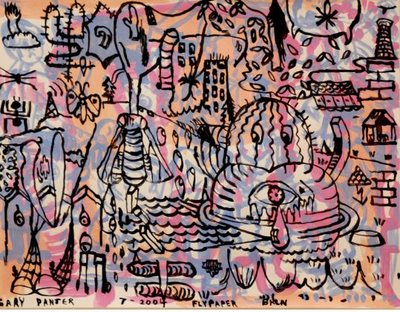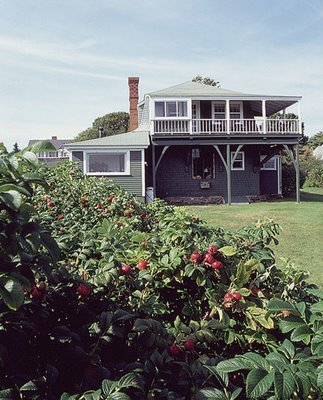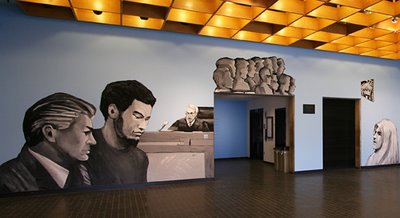Gary Panter interview
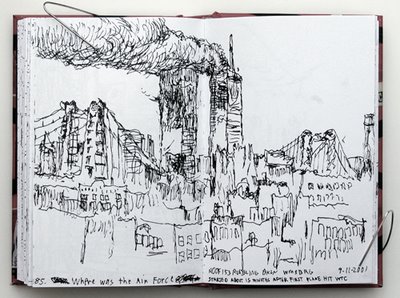
Earlier this week I posted a link to my review of Gary Panter’s exhibition “Daydream Trap” at the Aldrich Contemporary Art Museum and excerpts from a public talk he gave at RISD in 2006. Below are excerpts from my interview of Panter at his Brooklyn home on April 11, 2008:
- “I thought the next generation of pop artists would put things into the media and then pull them back out of the media. … And then it would be a warmer kind of pop art. In some way it’s about images running through systems.”
- On his art: “I think it’s a self-discovery. You’re your own shrink. … I can find out what I like and don’t like about my interests and I can sort of evolve in that way.”
- “It’s really trying to make a hieroglyphic of my experience as a human in a way.”
- “It’s got characteristics of infantilism and arrested development and nostalgia. I just tried to find images that were powerful to me in my life. And the funniest.”
- “It’s a bower bird kind of instinct. … Put the shiny stuff out front of it that I think will be the greatest attraction.”
- “I want it to be seductive. I want it to control the mood. Because I think that’s what painting does. It tries to emanate or resonate and make some bell tones.”
- “These things are landscapes. They’re inhabited. … I really like thinking very simply about things. If it’s blue and it’s up high, it’s sky. And if it’s green and it’s down low, it’s grass.”
- “There’s this kind of mark I want and it comes from a short stubby brush. … This is kind of a really human hand-made printing process.”
- “When I took LSD in the ‘70s I was really shocked by how everything was in there. I thought I was going to have this organic religious experience. And I was just full of synthetic commercials. It was horrifying.”
- “Aesthetics are about seduction in some way. It’s coming out of mating symbols in some way. … And then we can use it in different ways.”
- “If you’re going to be dealing with imagery as a painter it should probably be primal. So it speaks to the species in some way.”
- “A lot of things is is it poetic or not. If it connects too readily it becomes entertainment. And if it’s poetic it’s probably a little less determined to you. I don’t want to make dead art. I don’t want it to be a TV show.”
- “Low tech is important in a way. I like cave men art. I think we’re cave men, we’re gophers pretending to be something else.”
- “It’s a pretty horrible world. You can scream, you can cry, you can laugh or all of the above. … I think humor is wise. If you talk to Sufi and Zen masters, they’re pulling this way. And it’s a way of reconciling opposites. … Zen humor short-circuits your assumptions.”







